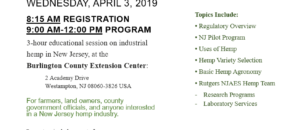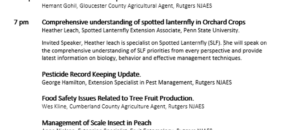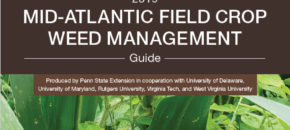
You’re invited to attend an upcoming educational session being held at the Burlington County Extension Center on Wednesday, April 3, 2019. Registration begins at 8:15 AM. See flyer for details: If interested, please RSVP to Anna Molinski annamol@njaes.rutgers.edu by March 29, 2019. Space is limited.
Continue reading...



